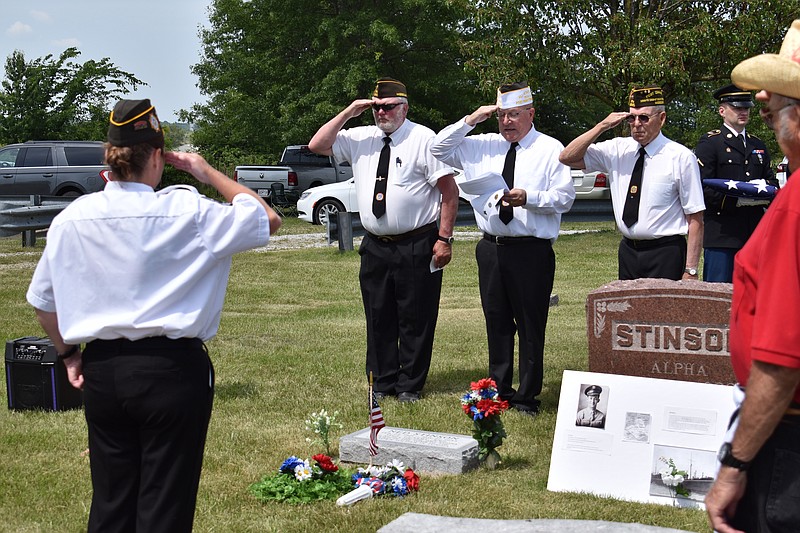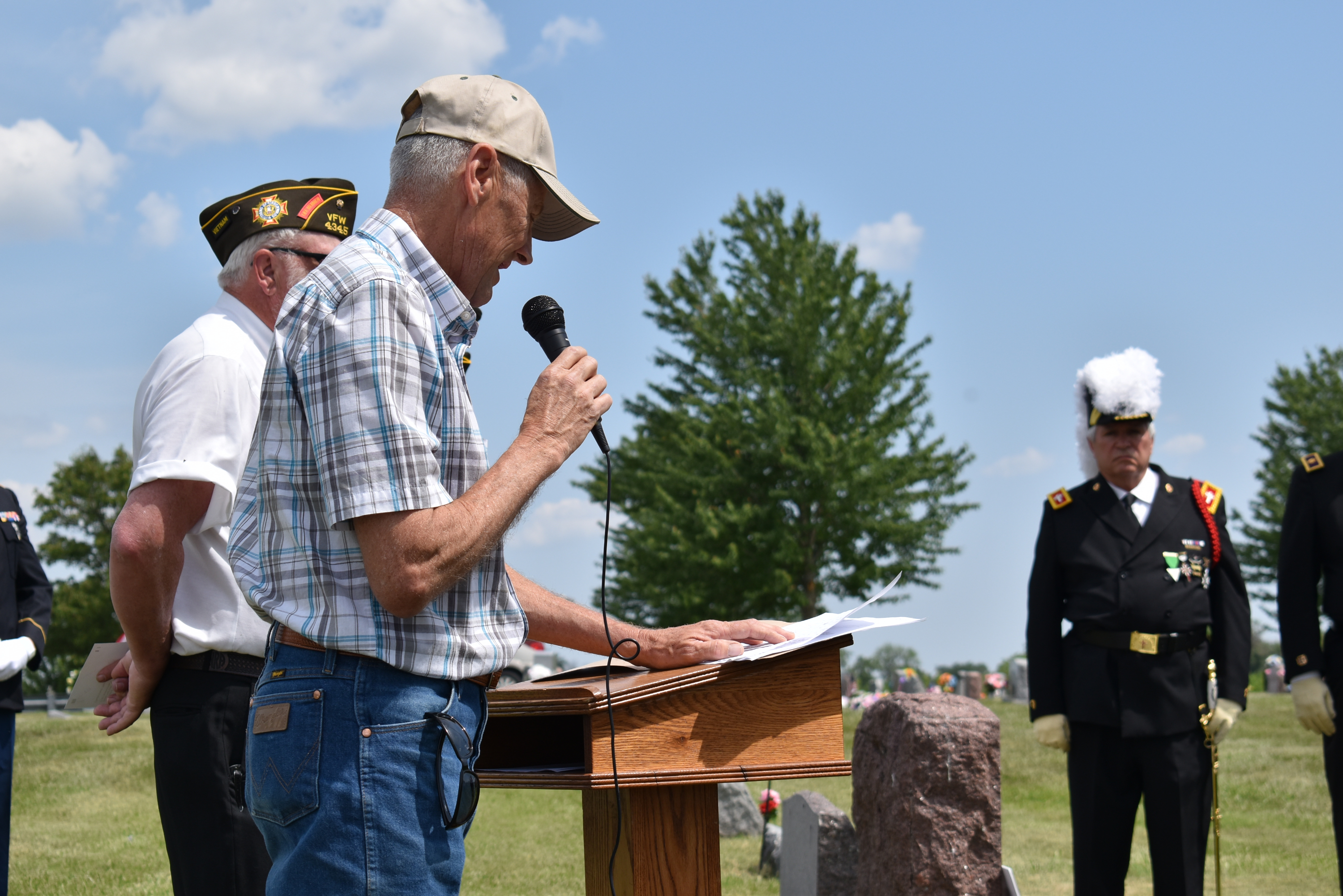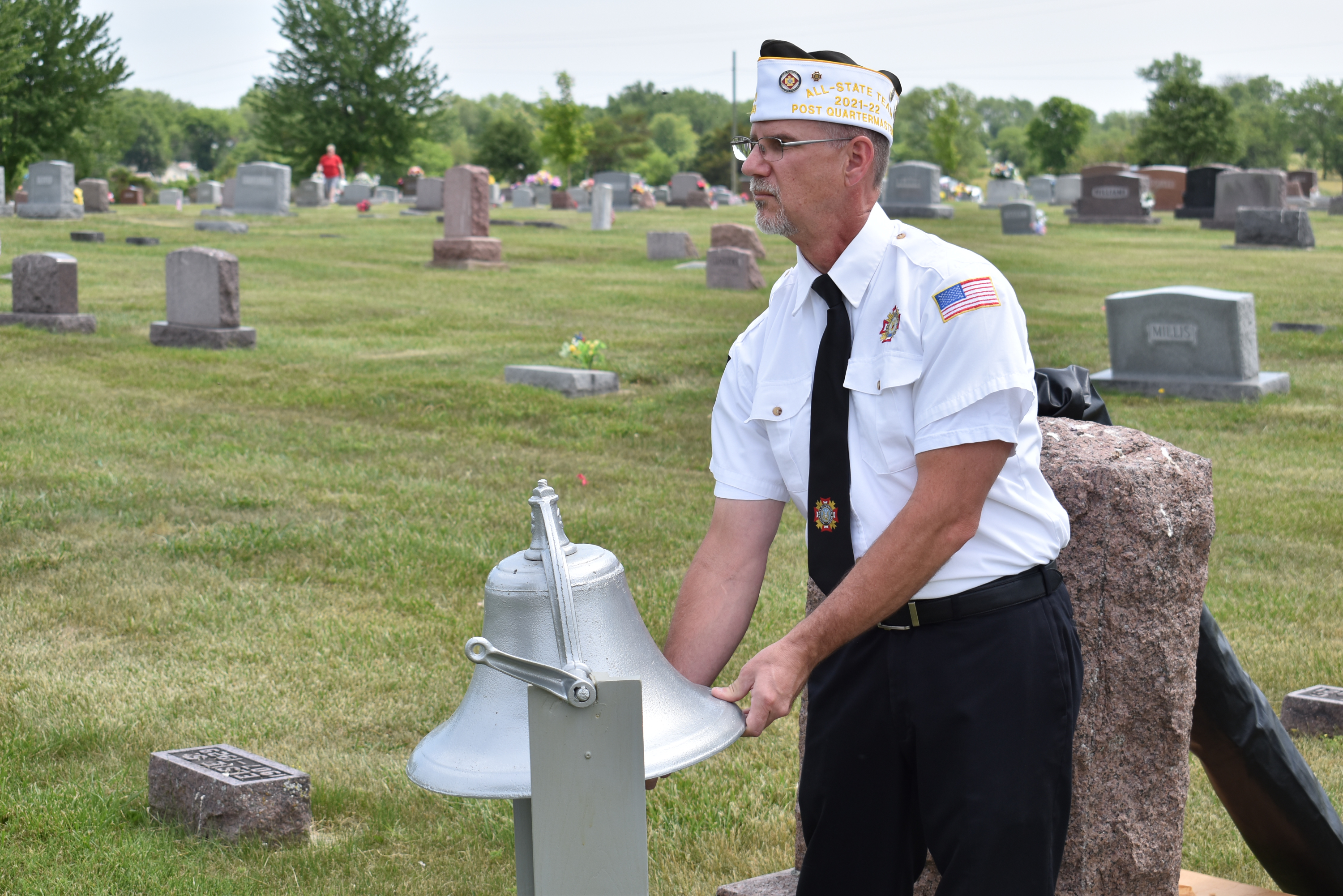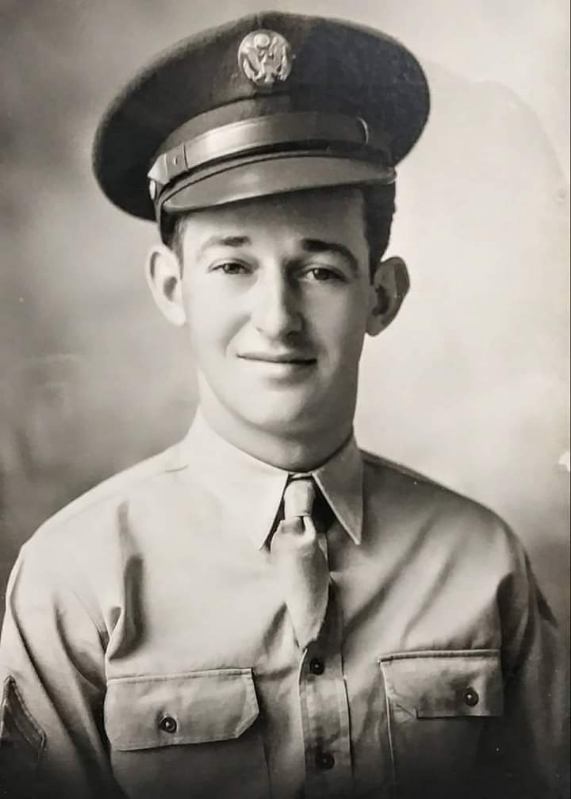CLARKSBURG -- After many years of secrecy, the truth of Ned Stinson's death during World War II is finally revealed.
Many gathered Monday as the Clarksburg native was honored during a Memorial Day ceremony at the Hickman Cemetery in Clarksburg nearly 80 years after his death. Stinson, a technician fifth grade in the U.S. Army Air Corps, was killed alongside a thousand other U.S. Army troops Nov. 27, 1943, after their ship, the HMT Rohna, was attacked by a German radio-controlled glide bomb. According to the Naval History and Heritage Command (NHHC), the Rohna's sinking is known as "the greatest loss of U.S. life 'at sea,' due to enemy action."
Other military members, active duty and veterans, who died in the previous year were also recognized by the Veterans of Foreign Wars (VFW) Post 4345 of California. As their names were read, VFW member Tom Wilson would ring a bell in their honor. American Legion Post 304, Tipton, also participated with a gun salute honoring the deceased.
Susan Hodges relayed the story of the Rohna's sinking to Eddie Vaughan, Stinson's nephew, after uncovering it while researching Stinson's death online. Vaughan received a folded flag honoring his uncle from the Missouri Army National Guard after listening to Gale Hodges, Susan's husband, present the once-secret tale of the HMT Rohna's sinking.
"I just thought it was time to share (Stinson's story) with the whole world," Susan Hodges said. "There was 100 people from Missouri that died on the Rohna, and I don't think they've gotten their due recognition."
Vaughan said he knew Stinson was lost at sea, but never knew the full story of his uncle's death until Susan contacted his brother. He said his mother and grandfather never knew the full story, either, as the incident was quickly classified with survivors being told to not speak about it.
"I understood why they did what they did, but I did not understand the length of time involved," Vaughan said. "I think that was just a mistake, let's call it that. I don't think it was intentional, but it was a mistake. Those families should've known."
The HMT Rohna, a 8,600-ton passenger/cargo ship owned by the British India Steamship Company and requisitioned for troop transport by the British, according to the NHHC, embarked Nov. 25, 1943, from North Africa in a 24-ship convoy to construct runways for the B-29 Superfortress bomber in India. The NHHC said 1,981 U.S. Army soldiers from the 853rd Engineer Battalion, 322nd Fighter Control Squadron, 31st Signal Construction Battalion and 44th Portable Surgical Hospital were among those aboard the ship.
On the following day, Gale Hodges said, the ship entered "Suicide Alley" -- a dangerous stretch of the Mediterranean Sea known for German attacks. It was not long before the Germans targeted the convoy, with the NHHC saying 30 Luftwaffe bombers participated by dropping Hs-293 radio-controlled, rocket-boosted glide bombs.
With the help of smoke screens, maneuvers and radio-jamming equipment, only one of the more than 40 Hs-293 bombs deployed would hit its target -- the HMT Rohna.
The Hs-293 struck the Rohna's port side, blowing holes in it and flooding its engine room. Gale Hodges said 300 U.S. Army troops died in the blast. With many lifeboats damaged, most survivors risked pneumonia while the USS Pioneer minesweeper, Clan Campbell cargo ship and Holcomb corvette rescued them. The HMS Atherstone provided a smoke screen for protection as survivors were rescued. According to the NHHC, the four ships rescued more than 780, with other ships rescuing a number of others.
In total, 1,149 people died in the incident -- 1,050 being United States personnel.
The incident was kept under tight wraps to "prevent the Germans from learning how effective the guided bomb had been against Rohna," the NHHC website said. It wasn't until 1967, when the Freedom of Information Act was passed, that details of the sinking started becoming public. Gale Hodges said the classification not only left victim's families in the dark, but also meant the Rohna attack -- and those who died as a result -- would be forgotten and omitted from World War II history books.
According to the NHHC, those aboard the Rohna and USS Pioneer received recognition in October 2000 for their courage and sacrifice through the passage of House Concurrent Resolution No. 408.
Vaughan said he's thankful the story is now out and that many showed up in support of the uncle he lost years before he was born.
According to a Facebook post by Susan Hodges, Stinson is also honored alongside his shipmates on a memorial in Tunisia, in addition to the headstone next to his parents' at Hickman Cemetery.
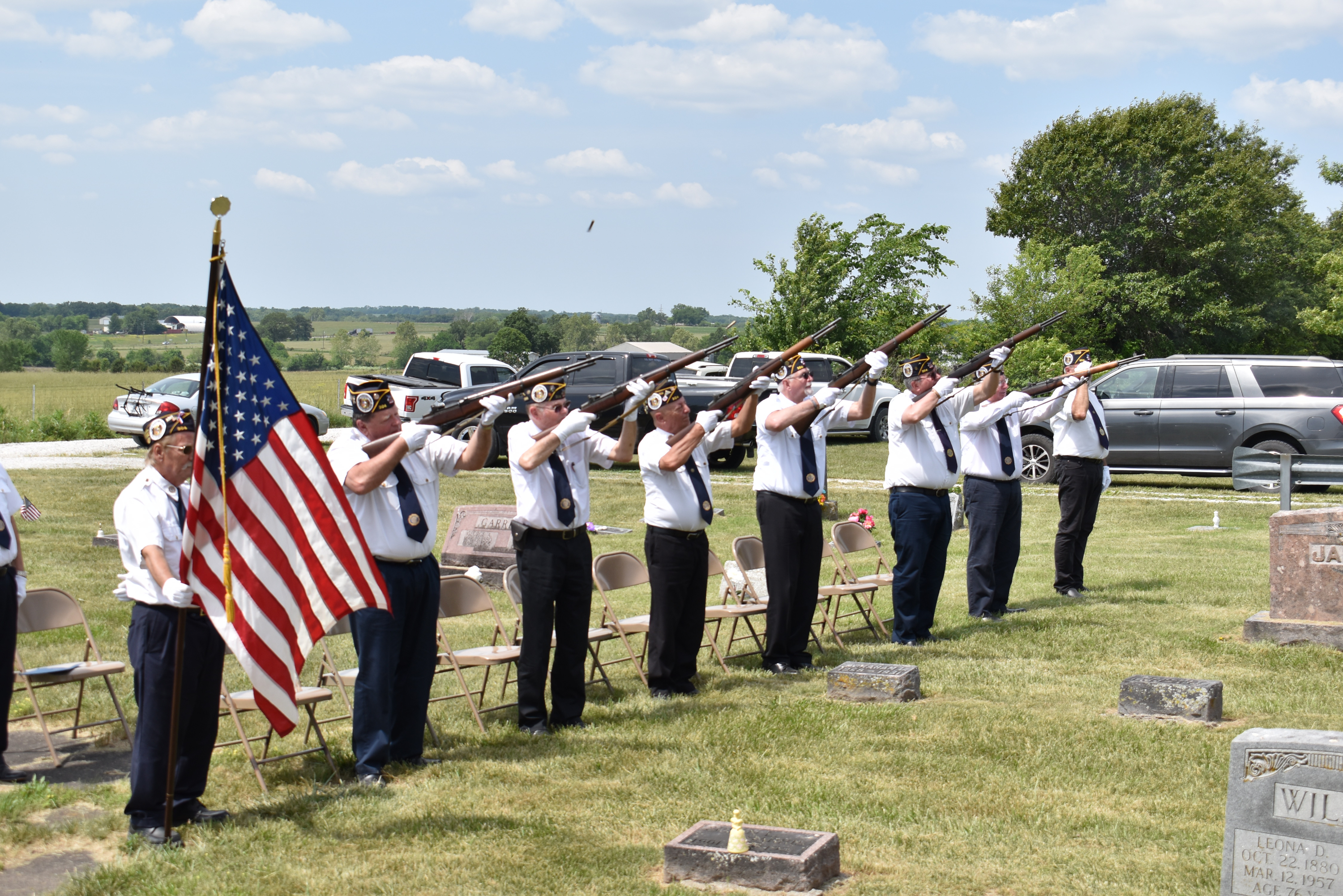 Democrat photo/Garrett Fuller — Members of American Legion Post 304, Tipton, shoot guns Monday as part of a salute honoring Ned Stinson, a U.S. Army soldier who died in 1943 during the sinking of the HMT Rohna, and other fallen military members during a Memorial Day ceremony at the Hickman Cemetery in Clarksburg.
Democrat photo/Garrett Fuller — Members of American Legion Post 304, Tipton, shoot guns Monday as part of a salute honoring Ned Stinson, a U.S. Army soldier who died in 1943 during the sinking of the HMT Rohna, and other fallen military members during a Memorial Day ceremony at the Hickman Cemetery in Clarksburg.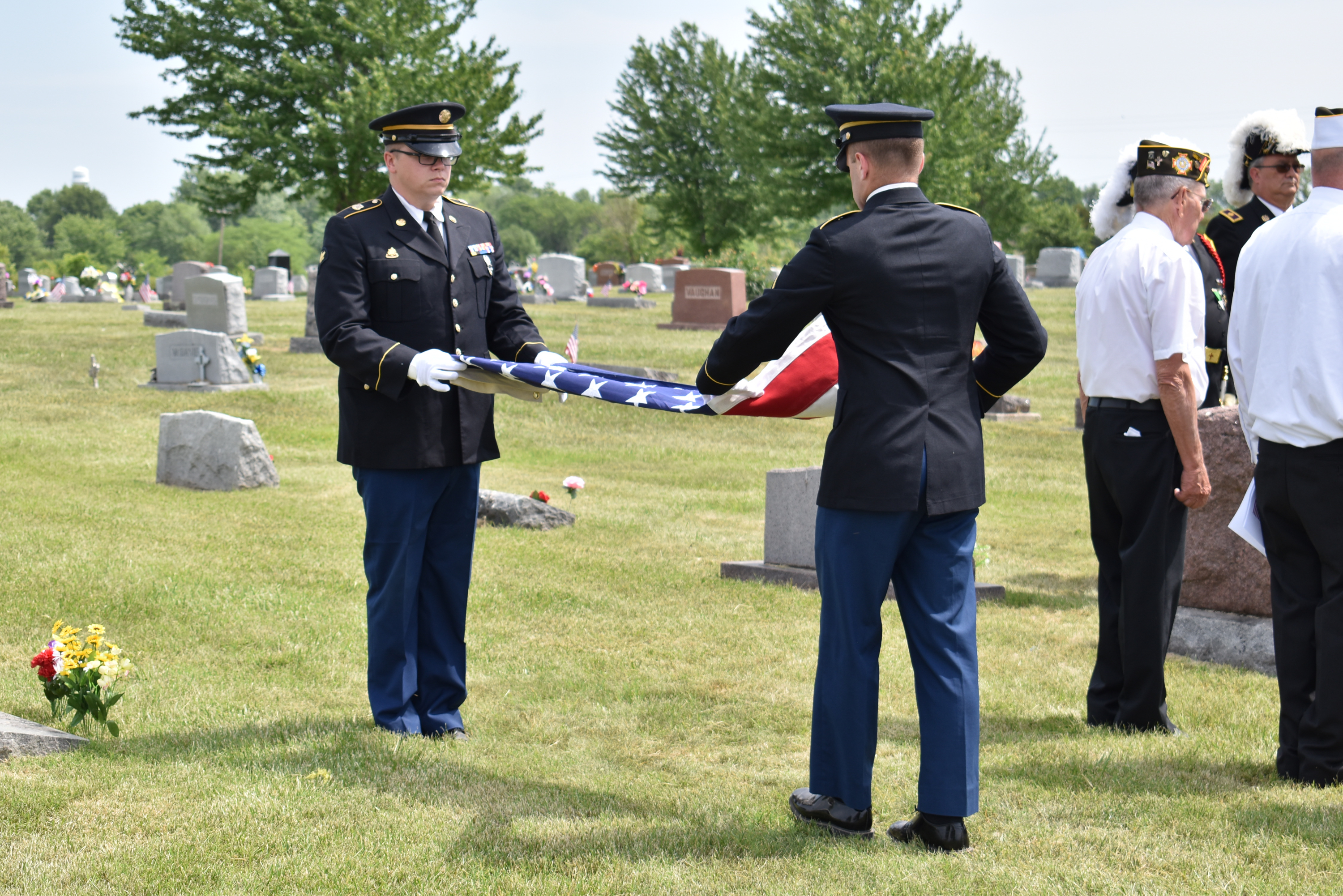 Democrat photo/Garrett Fuller — Members of the Missouri Army National Guard fold a flag Monday to honor Ned Stinson, a U.S. Army soldier who died in 1943 during the sinking of the HMT Rohna, at a Memorial Day ceremony at the Hickman Cemetery in Clarksburg. The flag was presented to Eddie Vaughan, Stinson's nephew.
Democrat photo/Garrett Fuller — Members of the Missouri Army National Guard fold a flag Monday to honor Ned Stinson, a U.S. Army soldier who died in 1943 during the sinking of the HMT Rohna, at a Memorial Day ceremony at the Hickman Cemetery in Clarksburg. The flag was presented to Eddie Vaughan, Stinson's nephew.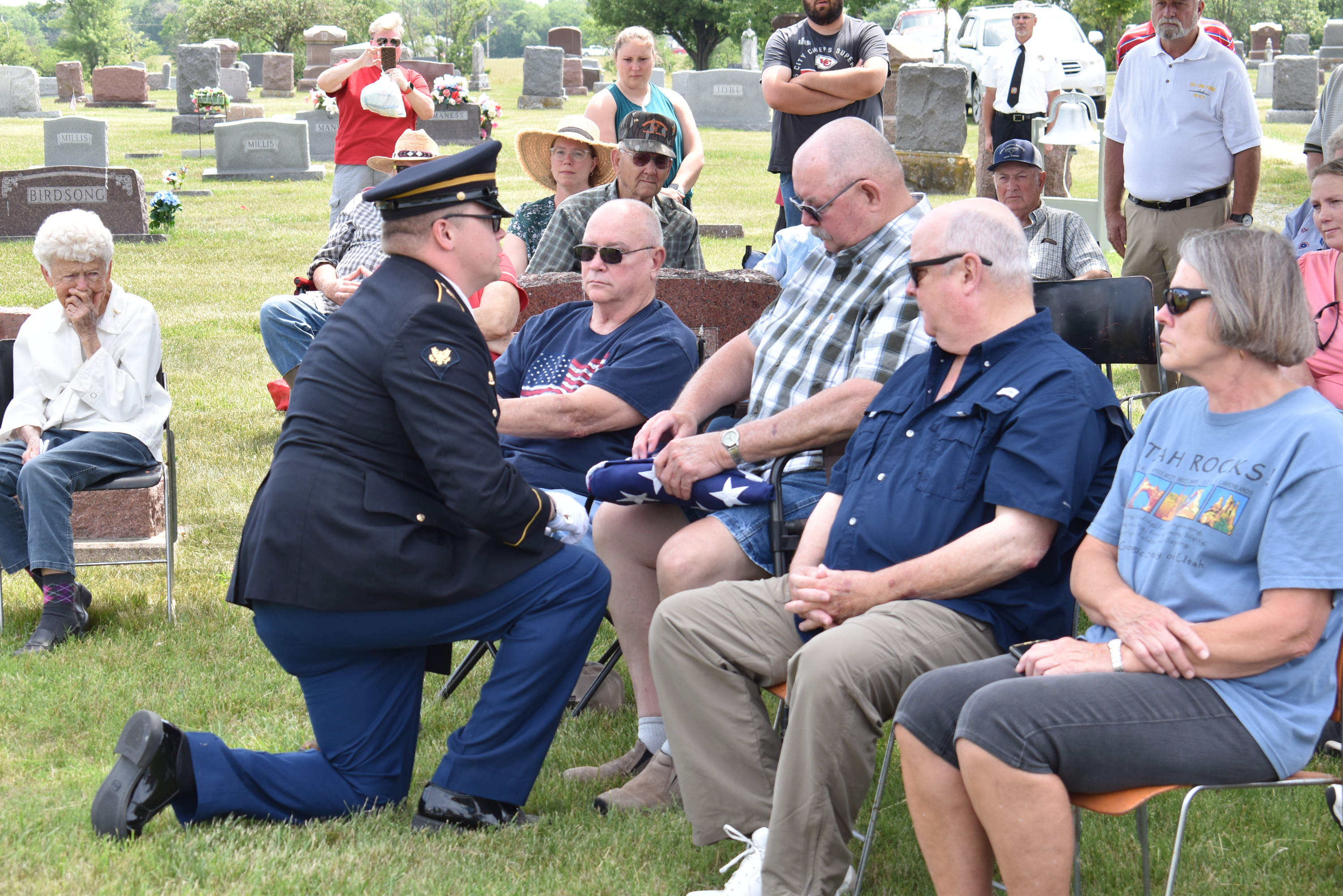 Democrat photo/Garrett Fuller — Eddie Vaughan, seated in plaid shirt, receives a folded flag honoring Ned Stinson, his uncle who died in November 1943 during the sinking of the HMT Rohna, from a Missouri Army National Guardsman on Monday at the Hickman Cemetery in Clarksburg. Stinson was honored at a Memorial Day ceremony where the once-secret story of the HMT Rohna's sinking was shared.
Democrat photo/Garrett Fuller — Eddie Vaughan, seated in plaid shirt, receives a folded flag honoring Ned Stinson, his uncle who died in November 1943 during the sinking of the HMT Rohna, from a Missouri Army National Guardsman on Monday at the Hickman Cemetery in Clarksburg. Stinson was honored at a Memorial Day ceremony where the once-secret story of the HMT Rohna's sinking was shared.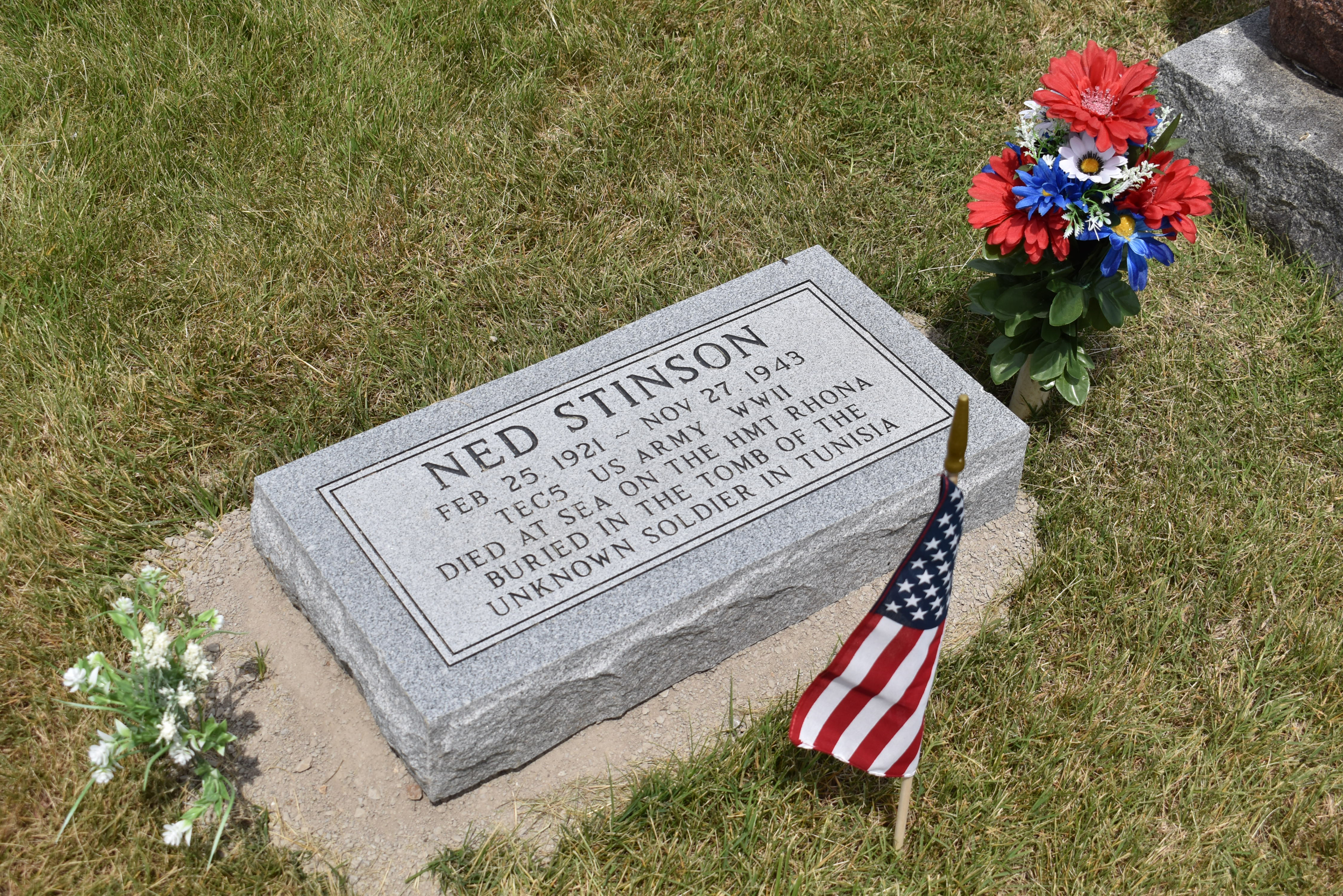 Democrat photo/Garrett Fuller — A headstone remembering Ned Stinson, a technician fifth-grade in the U.S. Army Air Corps, is seen Monday in the Hickman Cemetery in Clarksburg. Stinson, along with more than a thousand other U.S. Army troops, was killed when a German bomber destroyed the HMT Rhona Nov. 27, 1943, in the Mediterranean Sea while en route to India.
Democrat photo/Garrett Fuller — A headstone remembering Ned Stinson, a technician fifth-grade in the U.S. Army Air Corps, is seen Monday in the Hickman Cemetery in Clarksburg. Stinson, along with more than a thousand other U.S. Army troops, was killed when a German bomber destroyed the HMT Rhona Nov. 27, 1943, in the Mediterranean Sea while en route to India.
